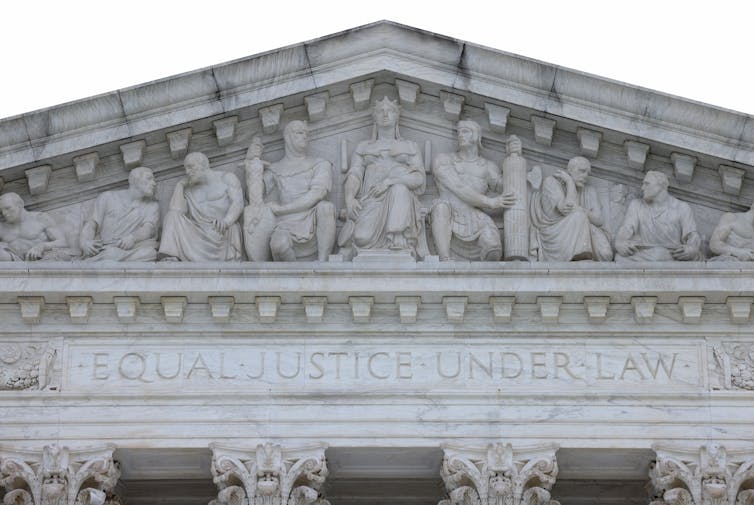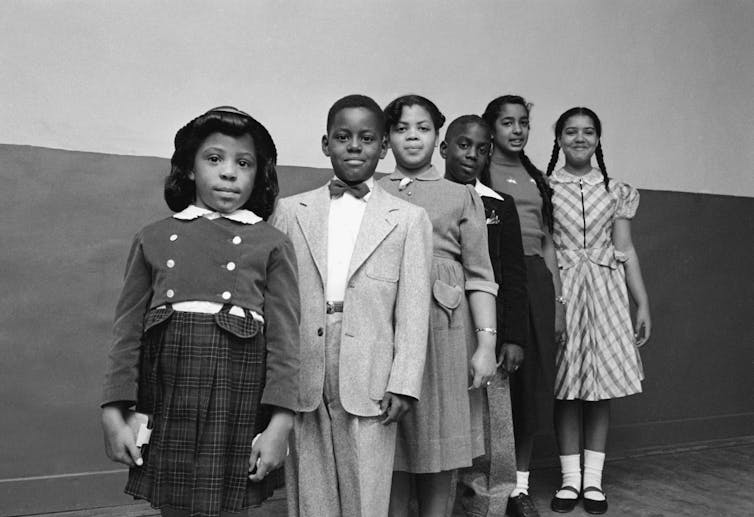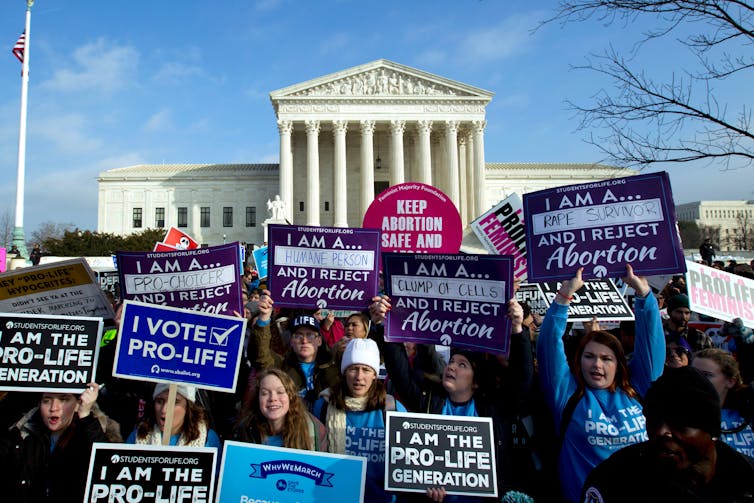
Win McNamee/Getty Images
Richard L. Pacelle, Jr., University of Tennessee
The first Monday in October is the traditional day that the U.S. Supreme Court convenes for its new term. Analysts and soothsayers carefully read the signals and forecast the direction the court will take. This year the scrutiny seems a little more intense, as the court takes up several highly charged cases.
Alexander Hamilton famously thought the judiciary would be the weakest branch of government. He recognized that the Supreme Court lacked “the sword and the purse” and could not enforce or implement its own decisions. Rather, it would need to rely on the good offices of the other branches.
As a student of the Supreme Court, I have examined how the power and authority of the Court have waxed and waned over the centuries. The modern Supreme Court, dating back to Brown v. Board of Education in 1954, is one of the most powerful tribunals in the world and across history.
That immense power has arguably made the court a leading player in enacting policy in the U.S. It may also cause the loss of the court’s legitimacy, which can be defined as popular acceptance of a government,
political regime or system of governance.

Carl Iwasaki/Getty Images
May it please the Court
When the founding fathers designed U.S. government, Congress was supposed to be the most powerful institution. But gridlock has sapped its vitality. Presidents, who have enormous power in foreign affairs, are often constrained in domestic politics. The limits on the Supreme Court – no army, no administrative enforcers – may be real, but the judiciary, with the Supreme Court at its apex, has become in the view of some, the most powerful branch of government.
One of the lures of the Supreme Court is that a victory can be etched in stone as a precedent that can be used for decades.
The U.S. government, states, corporations, unions and interest groups are among the so-called “repeat players” who strategically use the courts – including the Supreme Court – to supplement their lobbying efforts and further their policy objectives.
An interest group like the American Civil Liberties Union might go to the Supreme Court to protect a bookseller’s free expression. The National Association for the Advancement of Colored People, now called simply the NAACP, might challenge state or national legislation that is perceived to suppress voting rights. The U.S. government might prosecute a defendant charged with violating an indecency act. Civil rights advocates famously used the judicial branch because Congress, the president or both were not responsive.
Groups, of course, might use the courts because the judiciary is the most appropriate venue to defend the rights of unpopular groups or ensure protections for defendants. The courts might better protect against tyranny of the majority. Groups might bring a case to protect the free exercise of religion by Muslims or challenge aid to religious schools as favoring one religion over another.
The ultimate resource: legitimacy
The Supreme Court’s public approval annually hovers around 50% to 60%, which is much better than Congress and typically better than the president. But that approval is at its lowest ebb in decades.
The controversy over recent nominations, threats to pack the court, and whispers that certain precedents are about to be overturned have held the court up to more attention and threaten its legitimacy. And the court’s ultimate authority rests on its legitimacy. If the court is seen as too political, it will bleed this precious resource.
The Supreme Court has almost complete discretion over the cases that it hears. It annually gets 7,000 to 8,000 petitions for its attention and it routinely takes about 85 cases for full review.

AP Photo/Jose Luis Magana
The court takes cases to resolve disputes between lower courts and because the parties are raising important issues. But having a really important issue does not ensure the court will review it.
Sometimes the court simply wants to let an issue develop a little more in the lower courts before addressing it. The court may not want to get ahead of public opinion. For years, the court simply refused to take cases involving gay rights. Sometimes, they try to avoid an issue in hopes Congress or the states might be compelled to intervene.
The court’s ultimate decision is binding precedent on lower courts and the justices themselves.
The justices have been criticized for using the court to make policy decisions. This is controversial in part because the justices are not elected and enjoy lifetime tenure. They cannot be voted out of office.
Critics prefer that the court adopt judicial restraint and defer to the elected branches of government who could be removed by the voters if they oppose their policies. Both sides charge the other with being activists, which is the worst insult you could levy at a judge.
But the court’s willingness to push its way into the political maelstrom has quietly been welcomed by the other branches that can avoid the difficult questions and then curry favor with the voters by criticizing the court.
A court of law or of men and women?
As this Supreme Court term begins, opponents and proponents of reproductive rights are predicting the court will overrule one of its precedents, Roe v. Wade. Of course, this would not be the first time that such a prediction has been made.
Anyone analyzing the court needs to reconcile two competing realities. First, justices are relatively consistent in their decision-making: Conservatives issue conservative decisions and liberals issue liberal ones. Second, the court itself seldom overrules one of its precedents. In addition, despite the divisions on the court, usually about one-third of the cases are decided unanimously.
Two decades ago, seven of the sitting justices at the time expressed the view that Roe was wrongly decided, but a majority of that court never voted to relegate it to the dustbin of history.
On the other hand, when the court does overturn precedents – for instance, Brown reversed Plessy v. Ferguson, ending legal segregation – it is after the passage of time. Fifty years is typical and Roe is approaching that hallmark.
[Over 110,000 readers rely on The Conversation’s newsletter to understand the world. Sign up today.]
Occasionally, the court makes a decision that is out of step with public opinion and may pay a hefty institutional price. When the Taney Court issued the Dred Scott v. Sanford ruling in 1857, claiming freed enslaved people could not become citizens and overruling the Missouri Compromise that balanced the number of free and slave states, the decision weakened the judiciary for decades. When the conservative-leaning court gutted portions of the New Deal, President Franklin Roosevelt attacked the court and the court backed down.
Overturning Roe would invite criticism and closer scrutiny. It might expose the court as an institution that makes the law rather than one that interprets it.![]()
Richard L. Pacelle, Jr., Professor of Political Science, University of Tennessee
This article is republished from The Conversation under a Creative Commons license. Read the original article.
















